Family Papilionidae Scientific name Atrophaneura polyeuctes Rank Species | Genus Byasa Order Butterflies and moths | |
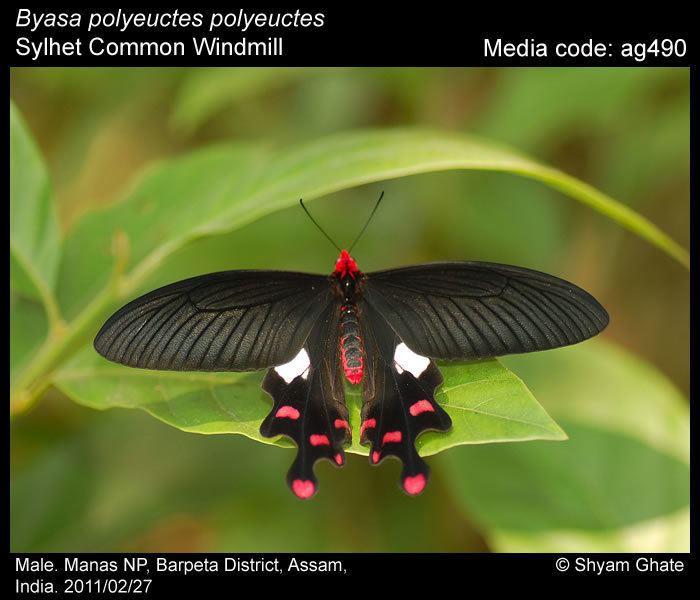 | ||
Similar Byasa dasarada, Byasa impediens, Atrophaneura varuna, Atrophaneura horishana, Butterflies and moths | ||
Butterfly byasa polyeuctes temessus
Byasa polyeuctes, the common windmill, is the most common member in India of the windmills genus (Byasa), comprising tailed black swallowtail butterflies with white spots and red submarginal crescents.
Contents
- Butterfly byasa polyeuctes temessus
- byasa polyeuctes termessus
- Range
- Status
- Description
- Taxonomy
- Subspecies
- Related species
- Habitat
- Habits
- Life cycle
- Food plants
- References
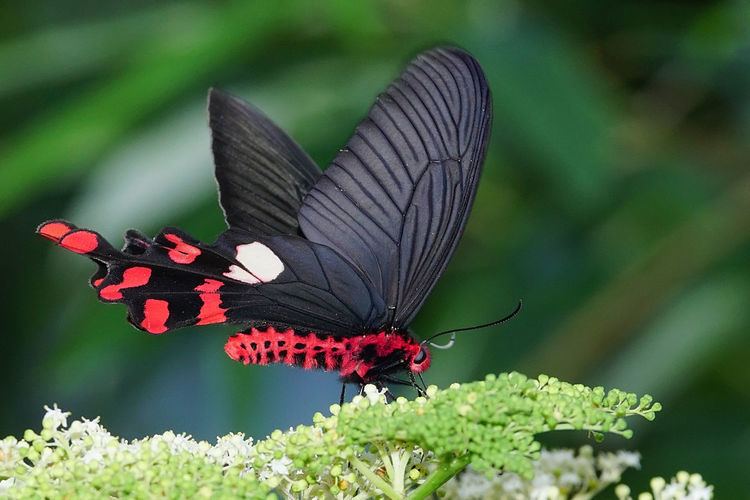
byasa polyeuctes termessus
Range
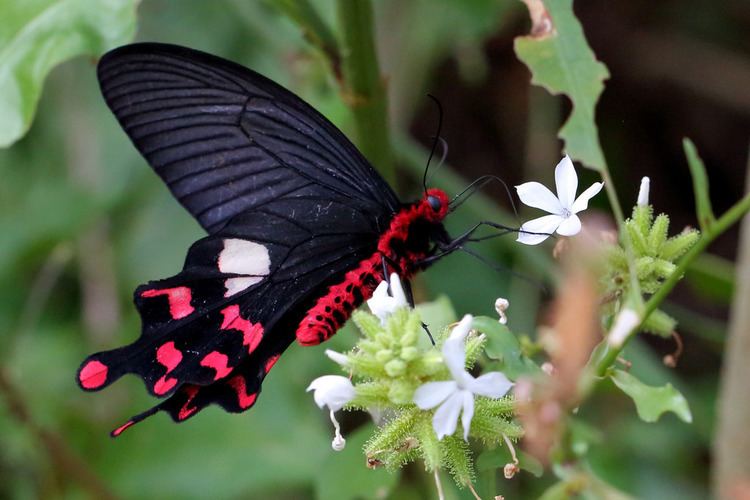
This butterfly lives in Pakistan, northern ranges of India, Nepal, Bhutan, Myanmar, northern Thailand, Laos, Vietnam, southern China (including Yunnan) and Taiwan.
In India, the Himalayas from Himachal Pradesh to Sikkim, Assam onto Chinese South Tibet region and northern Myanmar.
Status
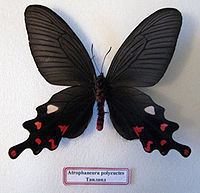
Overall, the butterfly is not rare. It is common in parts of Sikkim but becomes rarer westwards. It is extremely scarce in Shimla though not rare from Kangra.
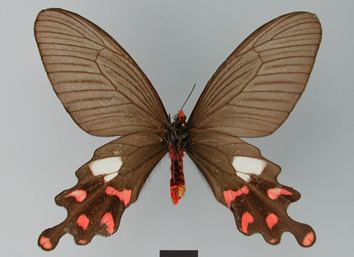
In the west it ranges from the Azad Kashmir disputed territory part of the wider Kashmir region of Pakistan and India.
Description
Taxonomy
Subspecies
It has four subspecies, two of which occur in India:
Related species
Habitat
This butterfly prefers forests and woods. It frequents river valleys. It occurs at low elevations (1,000 to 5,000 feet (300 to 1,520 m)) in north east India but is found at higher altitudes in the western extent of its range – up to 11,000 feet (3,400 m) in Kashmir.
Habits
This butterfly has a leisurely flight high above, but is easily recognisable by the thin long forewings and hindwings. It is attracted to flowers and visits Clemanthe, Buddleia, Lantana and Rhododendron blossoms.
It is mimicked by a day flying moth Epicopa (or Epicopia) polydorus, which flies at the same period and over the same range as the common windmill and has much the same manner and habits.
Life cycle
This species has several broods where it finds suitable climate. It is seen on the wing between April and September. The imago has a foul odour.
